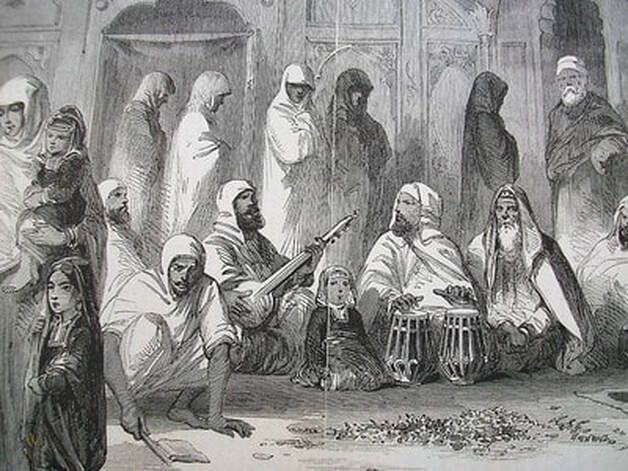Here’s the corrected text with the content intact:
Dhadi, one who sings vars or ballads to the accompaniment of a musical instrument called dhad, a drumlet held in the palm of one hand and played with the fingers of the other. A concomitant of dhad is the sarangi, a stringed instrument. Dhadis, patronized by chiefs and princes, eulogized the deeds of valor of the members of the families they served or of popular folk heroes. In the Dasam Granth (Charitra 405), their origin is traced back to the mythological combat between Mahakal and Suasvirya, the first ancestor of the dhadis being born of the sweat of the former.
Although the institution of dhadi dates back to time immemorial and Guru Nanak (1469–1539) has recorded himself in the Guru Granth Sahib as a dhadi singing praises of the Supreme Lord, history mentions Bakhshu (d. 1535), who was patronized first by Raja Man Singh Tomar (1486–1516) of Gwalior and, after his death, by the kings of Kalinjar and Gujarat, as the first dhadi. He is also credited with the invention of a new raag which he named Bahadur Tori after Sultan Bahadur of Gujarat, who was his patron during the last years of his life.
In the Sikh tradition, dhadis have flourished since the days of Guru Hargobind (1595–1644), who engaged some leading exponents of the art to recite heroic balladry at Sikh assemblies.
The two names recorded in old chronicles are those of Abdullah and Nattha of the village of Sursingh, in present-day Amritsar district. Among the leading dhadis of the time of Guru Gobind Singh are mentioned Mir Chhabila Mushki and Natth Mall. Dhadis have continued to be popular, and at larger Sikh divans, especially honoring the memory of heroes and martyrs, they are listened to avidly as they render, in ringing folk tunes, their deeds of gallantry and sacrifice.
Natth Mall, who also composed a var entitled Amar Nama, originally in Persian and later translated into Punjabi by Dr. Ganda Singh, is said to have been in the train of Guru Gobind Singh at the time of his journey to the South.
References:
Ganda Singh, trans., Nath Mall’s Amar Nama. Amritsar, 1953.
In Sikh musicology, Dhadi refers to a unique tradition of ballad singing that combines storytelling with music to narrate heroic tales and historical events. The term Dhadi originates from the Punjabi word for “bard” or “minstrel.” This tradition is deeply rooted in Sikh history and culture, serving as a medium to inspire courage, devotion, and moral values.
Key Features of Dhadi Tradition
- Instruments: The Dhadd (a small drum) and Sarangi (a string instrument) are the primary instruments used in Dhadi performances. These instruments create a rhythmic and melodic backdrop for the narration.
- Themes: Dhadi ballads often focus on the valor of Sikh warriors, the sacrifices of martyrs, and significant historical events. They aim to instill a sense of pride and identity among listeners.
- Performance Style: A Dhadi Jatha (group of performers) typically consists of a lead singer and accompanying musicians. The performances are highly emotive, blending music with dramatic storytelling. Historical Significance
The Dhadi tradition gained prominence during the time of Guru Hargobind, the sixth Sikh Guru, who encouraged the singing of heroic ballads to inspire the Sikh community. Over time, Dhadi performances became an integral part of Sikh gatherings and festivals, especially at gurdwaras.



